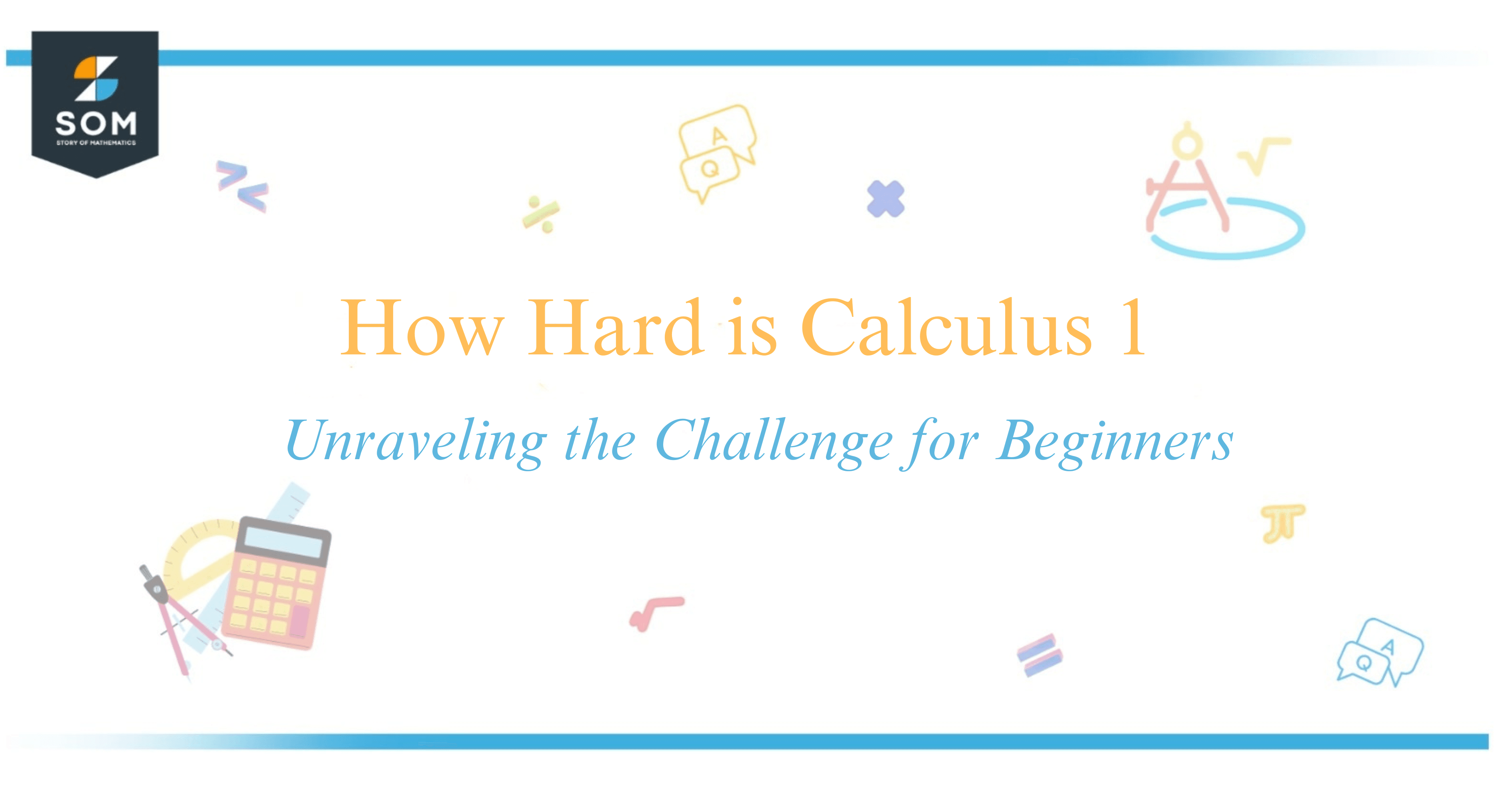JUMP TO TOPIC

In my experience, the difficulty of Calculus I lies not in the complexity of its concepts, but in the application of these concepts to solve real-world problems. It’s the transition from understanding the theory to applying it in practical scenarios that can be quite demanding.
To understand Calculus I, I familiarize myself with its foundational concepts such as limits, derivatives, and integrals. Calculus often presents a significant challenge for students due to its abstract nature and the higher-level thinking required.
Students frequently cite topics like the (ε, δ)-definitions of limits and the Fundamental Theorem of Calculus as hurdles in their mathematical journey. I’ve noticed that some students struggle because Calculus I not only requires mastery of new mathematical concepts but also a strong grasp of algebra and trigonometry to solve problems effectively.

Overcoming the challenges of Calculus I is akin to training for a marathon—success comes with practice and perseverance. For those about to embark on this intellectual venture, remember that the climb may be steep, but the view from the top is well worth the effort.
Understanding the Fundamentals of Calculus I
Calculus I is often viewed as challenging because it brings together concepts from algebra, trigonometry, and geometry.
For me, having a firm grasp on functions is the first step. I see functions as the building blocks of calculus—they model relationships and changes. When studying calculus, I focus on understanding limits, as they are crucial for grasping more complex topics.
Limits examine what happens to a function as it approaches a certain point. I use the notation
$\lim_{{x \to c}} f(x) $
to denote the limit of the function ( f(x) ) as ( x ) approaches ( c ). My exploration of limits is essential for learning about continuity, a property that I find necessary to tackle before moving on to derivatives.
Derivatives are a core component of calculus that I use to determine a function’s rate of change. Algebra and trigonometry skills come in handy when I work with derivatives, particularly when manipulating expressions and solving problems. The derivative of a function at a point is given by the notation
$ f'(x) = \lim_{{h \to 0}} \frac{f(x+h) – f(x)}{h}$
It’s like a formula capturing the essence of change, allowing me to find slopes of tangent lines or rates at which quantities change.
I’ve summarized the fundamentals of Calculus I below, which help organize the key concepts and their relations:
| Concept | Relevance to Calculus |
|---|---|
| Functions | Represent relationships of quantities; the starting point |
| Algebra | Needed for solving equations and manipulating functions |
| Trigonometry | Essential for functions involving angles and periodicity |
| Geometry | Provides a visual understanding of slopes and areas under curves |
| Limits | Foundation for defining continuity and derivatives |
| Derivatives | Measure rates of change and slopes of functions |
By focusing on these elements, I find that the foundations of Calculus 1 become much more manageable.
Complexity Level of Calculus 1
When I first approached Calculus 1, I quickly realized the subject’s intricacies. It centers around foundational concepts such as limits, derivatives, and integrals, denoted as $\lim$, $\frac{d}{dx}$, and $\int$ respectively. These new symbols and operations can initially seem daunting.
Key Concepts:
- Limits: Understanding the behavior of functions as they approach specific points, expressed as $\lim_{x \to a} f(x)$.
- Derivatives: Calculating the instantaneous rate of change, written as $\frac{df}{dx}$ or $f'(x)$.
- Integrals: Representing area under a curve, shown with the integral symbol $\int$.
| Concept | Symbol | Description |
|---|---|---|
| Limits | $\lim$ | Approaching values |
| Derivatives | $\frac{d}{dx}$ | Rate of Change |
| Integrals | $\int$ | Area under a curve |
Approaching these concepts methodically is key. I ensure I grasp each deeply before moving to the next. For instance, when learning about derivatives, I first understand the limit definition, $\frac{df}{dx} = \lim_{h \to 0} \frac{f(x+h)-f(x)}{h}$, and then apply it to various functions.
My experience showed that hands-on practice is invaluable. Working through problem sets, I apply theorems and formulas to solidify my comprehension. Textbook examples serve as useful reference points during this process.
Practical Aspects and Resources for Mastery
When it comes to mastering Calculus I, I’ve learned that a multifaceted approach is best. One of the core concepts is integration, which includes finding the area under a curve and determining volume. These are more than just abstract concepts; they are applied in physics, engineering, and economics to solve real-life problems.
Practice and Homework
Consistent practice is crucial. I ensure to solve numerous problems, increasing in complexity, to deepen my understanding of concepts such as integration. For example, when working with integrals, I start with basic problems like $\int x dx$ and progress to more challenging ones involving the area under a curve, such as $\int_{a}^{b} f(x) dx$.
Study Groups and Tutors
I often join study groups to exchange insights and solve problems collaboratively. When topics get challenging, working with tutors can be extremely beneficial. They provide personalized guidance and can break down complex ideas into digestible parts—great for tackling tough integrals.
Resources
My go-to resources include:
- Textbooks: Essential for foundational theories and practice problems.
- Online Platforms: Websites like Khan Academy offer step-by-step tutorials.
- Lectures: University lectures available online enhance my learning.
Good Study Habits
Finally, I maintain good study habits, like:
| Habit | Description | Impact |
|---|---|---|
| Scheduled Study Time | Dedicate time for calculus work daily | Builds routine and reinforces concepts |
| Active Learning | Engage with material, don’t just passively read | Enhances retention |
| Regular Breaks | Take short breaks to avoid burnout | Increases productivity |
Balancing practice, leveraging resources, and sustaining good study habits have been key to my grasp of Calculus 1.
Conclusion
Calculus I presents its unique challenges, but it’s far from insurmountable with the right mindset and preparation. I’ve observed that students with a solid foundation in pre-calculus concepts like trigonometry (trigonometric functions)—you know, classic equations like $y = \sin(x)$—tend to fare better.
I firmly believe that success in Calculus I is achievable for anyone willing to commit to understanding the material. Some students may confront higher hurdles, especially if algebra was never their strong suit. However, hard work, along with consistent practice, can help bridge the gap between confusion and comprehension.
My peers and I have noticed that staying engaged in the coursework, seeking help when needed, and not shying away from problems no matter how complex, often leads to a successful outcome.
In the end, everyone’s calculus journey is personal. Remember that every mathematician started somewhere, and with persistence, you might just find a new appreciation for the beauty and precision calculus brings to understanding the world around us.
